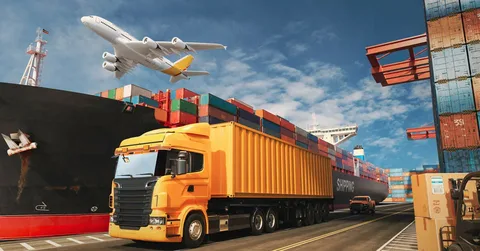
The digitized evolution in the world has demanded a major change in the clearance procedure for import and export purposes. International trades have become more complex in the AI-influenced era.
Historically, there was a lot of room for error, paperwork, and bureaucratic delays that made the import and export process difficult. However, as technology advances, these procedures have undergone a revolution that has streamlined workflows, increased productivity, and cut expenses.
This blog takes you on a trip to learn how technology advancements are changing import and export clearance custom procedures, with a particular emphasis on important topics.
Difficulties with Traditional Customs Clearance
For companies involved in international trade, following the maze-like customs laws can be daunting. Every nation has its own rules, tariffs, and documentation needs, and clearing customs is a complex and sometimes overwhelming process. Since even small mistakes in classification, value, or paperwork can result in significant delays and extra expenses, accuracy is crucial.
Complexity of Customs Regulations: Exact compliance with the numerous international regulations and tariffs is necessary to prevent delays and extra expenses. Regulations change frequently, and businesses must stay updated, which takes time and skill.
Time-consuming Manual Processes: The clearance procedure is considerably extended when manual paperwork and processing are used, as they are subject to human error. Complicated and inefficient layers are added when information must be manually cross-checked and verified.
Financial Penalties and Delays: Any inconsistencies in the paperwork may result in extra fees, supply chain disruptions, and customs holds. In addition to impeding the prompt delivery of products, delays result in increased storage and demurrage costs. Moreover, businesses may suffer a great deal financially from regulatory sanctions for non-compliance, which include inaccurate tariff classifications or underreporting of values.
The difficulties associated with the conventional customs clearance process can obstruct the free flow of global trade. The complexity of rules, the time-consuming nature of manual processes, the hazards of delays, and the potential for financial penalties highlight the necessity for a more streamlined and effective approach. Incorporating AI technologies is a viable answer to these persistent problems as global trade develops, pointing to a time when customs clearance will be more straightforward, faster, and more accurate.
Digital Documentation and E-Customs
The switch from paper-based to digital documentation is one of the most significant technological advances in clearance procedures for import and export operations. Electronic forms have replaced traditional paper forms due to the deployment of e-customs systems, dramatically decreasing processing times and minimizing error. Electronic customs systems are being adopted by nations all over the world. These systems allow companies to electronically submit the necessary paperwork, monitor the progress of their submissions in real time, and get immediate updates regarding their clearance status.
This change improves transparency while also expediting the clearance custom procedure. The real-time data regarding shipments that stakeholders can access makes better planning and forecasting possible. Furthermore, electronic documentation ensures that all required documents are easily accessible for customs officers to evaluate, reducing the possibility of lost or missing paperwork.
Automated Custom Systems
Another significant technological development revolutionizing customs procedures is automated customs systems. Computerized systems use sophisticated software and algorithms to perform repetitive operations like document verification, data entry, and compliance checks. These systems can automatically compare given data with customs laws, identify inconsistencies, and highlight possible problems for additional examination.
For instance, Automated Risk Assessment Systems examine cargo data to find shipments that pose a high risk and may need more scrutiny. This focused strategy speeds up the clearance of low-risk cargo while assisting customs authorities in concentrating their attention on high-risk sectors. Automated solutions facilitate the production of duty assessments, compliance reports, and customs declarations with minimal human interaction, resulting in expedited processing times and decreased operational expenses.
Blockchain Technology
Blockchain technology is frequently linked to cryptocurrencies. It improves the security, openness, and effectiveness of clearance processes, which is significantly influencing global trade. All parties participating in the supply chain can view the decentralized ledger of transactions created by blockchain technology. This technology keeps all shipment-related information, such as its origin, transit history, and regulatory compliance, safe and readily available.
Blockchain can expedite the process of verifying papers like bills of lading, certificates of origin, and customs declarations in the context of import and export clearance. Blockchain technology enables companies and customs officials to swiftly confirm the legitimacy of these documents, lowering the possibility of fraud and guaranteeing adherence to rules governing international trade. Furthermore, blockchain makes it easier for stakeholders to share data seamlessly, which enhances coordination and shortens clearance process delays.
Artificial Intelligence and Machine Learning
Clearance procedures are being advanced with the help of Artificial Intelligence (AI) and Machine Learning (ML), which offer sophisticated data analysis and prediction capabilities. Algorithms can analyze large volumes of data from many sources, including trade laws, customs declarations, and past shipment records, to find trends and anticipate problems.
For instance, AI-driven systems can determine the degree of risk associated with shipments by examining variables including the kind of items being shipped, the origin country, and the shipper’s background. These systems can suggest additional inspection or accelerate clearance based on the evaluated risk. Additionally, by improving the precision of tariff classifications and duty assessments, AI and ML can lower the possibility of mistakes and disagreements.
Future of Technology in Clearance Processes
As technology keeps growing, future developments in import and export clearance processes are probably in store. Quantum computing, Augmented Reality (AR), and 5G are emerging technologies that could improve the precision and efficiency of customs procedures. 5G networks have the potential to facilitate faster data transfer and communication amongst IoT devices, while augmented reality (AR) can offer real-time, interactive shipment information to customs officers.
Furthermore, it is anticipated that the fusion of many technologies, including blockchain, AI, and IoT, will result in a more unified and efficient clearance procedure. By integrating these technologies, customs officials and companies can increase international trade efficiency, transparency, and security.
Concluding Remarks
Technology’s ability to automate operations, improve data accuracy, and increase transparency is radically changing import and export clearance systems. Modernization procedures and the resolution of international trade difficulties are being facilitated by the use of documents, automated systems, blockchain, artificial intelligence, and the Internet of Things.
Businesses and customs agencies must adopt these developments to maintain competitiveness and guarantee safe, effective, and international trade practices. In the fast-paced world, Hayabusa Logistics provides safe and secure pickup truck hire service in Dubai for sophisticated warehouse services, custom clearance, land transportation, and warehouse operations to save you the trouble of handling this frequently complex logistics procedure.





